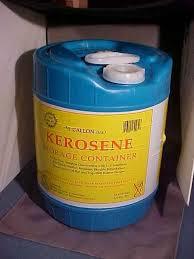Control Diesel Fuel Gelling
“ 1 out of 10 people know how to control diesel fuel gelling caused by cold weather “
Not everybody liked homework when they were in school and this shows. Only about 1 out of 10 truck owners put in the time and effort to learn more about their engine. They end up being unprepared for the complications brought by cold weather.
Congratulations, since you are reading this… you are the 1 in 10 that truly care!
Cold Season

As Autumn rolls in, everything starts to change. Leaves turn yellow, temperatures drop, rain is more frequent and trucks needs more attention.
Symptoms of Diesel Fuel Gelling
There are several signs that can tell you that your diesel has already gelled. One of these is when you are having trouble starting your engine. Diesel fuel gelling clogs the fuel lines and fuel filters, preventing the fuel to pass through them. This phenomenon then prevents the engine from starting.
Another sign is when there is a difference in the fuel rail pressure. This is likely the cause of problems like sluggish performance and inability to accelerate properly. Here, a difference between the desired fuel rail pressure and actual rail pressure is observed when accelerating. In these cases, the desired pressure usually spikes up while the actual pressure remains low because of the diesel fuel gelling stopping the fuel from getting where it should go.
 How to Control Diesel Fuel Gelling
How to Control Diesel Fuel Gelling
Adding Kerosene
It is a common practice for truckers to mix #1 diesel which has a blend of kerosene with diesel #2 which is used on road applications. Kerosene helps in lowering the plugging point temperature of the fuel and reduces its viscosity, therefore making diesel less likely to gel even during low temperatures. Places in the extreme cold zones, usually provide a winter diesel fuel mix like this. Unfortunately, it is not readily available at places down south when hauling loads north.
Going on Engine Idle
If you go asking around, you will probably hear drivers who suggest to keep the engine running to keep the fuel from gelling. While this may work in many cases, it is not recommended at all for a couple of reasons. Not only does it negatively affect fuel use, it can also lead to engine wear, tear and excessive emissions. Did you know that you can’t control diesel fuel gelling just by running the engine in extremely cold conditions? It will still gell and turn to a solid in the fuel tank.
Emergency Gear
Extra gear can help control diesel fuel gelling. Here, extra filters are needed to accommodate a cold flow treatment and a diesel emergency treatment. The cold flow treatment is used before going into the cold zone to prepare the fuel. The diesel emergency treatment, on the other hand, melts the gelled paraffin to get the fuel flowing again.
Additives and Fuel Treatments
Additives and fuel treatments are another common solution used to control diesel fuel gelling. Just like the earlier options mentioned, they also work to reduce the formation of paraffin crystals. They also lower the pour and gel points of diesel fuel as well.
A good example of a fuel treatment is CleanBoost® Sno-Cat™ Diesel Fuel Conditioner which is designed to control diesel fuel gelling by reducing the pour point and diesel fuel crystal formation in #1, #2, and even B5 and B20 Biodiesels. This quality additive is made with a unique blend of copolymers and a proprietary fuel catalyst that prevents the formation of crystals. The way it works is that it prevents fuel system plugging by modifying the very crystals that usually form in the fuel during low temperatures. The crystals formed are smaller in size with the help of this additive, therefore preventing waxing and allowing you to control diesel fuel gelling. This product, moreover, also has a pour point depressant chemistry that improves the flowing capabilities of the fuel.
Not All Are Created Equal
Additives like CleanBoost® Sno-Cat™ also offer a filter plugging preventative and help to stop water-related problems in the fuel. In addition to this, this product also increases the range of crude oil to be used in middle distillate production. Fuel technologies like these are also very helpful to those who don’t always have access to kerosene because it reduces the need for kerosene dilution in the fuel. It is also an EPA registered product so you can be assured that you are doing your part for the environment when using it.
Generally, fuel additives like CleanBoost® Sno-Cat™ help to boost fuel economy by making the diesel fuel more efficient by increasing the BTU energy. Finally, it also helps trucks run smoother and longer during those winter hauls with its specialized wax forming prevention capability. Perfect to have on board when you need that extra protection to stop any unnecessary downtime.
If you want to know more about this product, simply go here.
Want a quick and easy solution to thaw gelled diesel fuel in an emergency? Read on to learn what to do in emergencies.
About the Author
Tech Guy
Automotive enthusiast, passionate about Jeeps, hot-rods, turbos, performance, efficiency, diesels, fuels, high performance oils, additives and anything with an engine.

